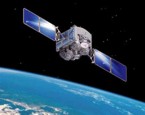T-Mobile and SpaceX yesterday evening announced an ambitious plan to use “a slice” of T-Mobile mid-band spectrum to support communications between conventional cellphones and a new type of SpaceX low-earth orbit Starlink satellite.
The CEOs of the two companies announced their plans at an event that was also livestreamed.
The plan is that “if you have a clear view of the sky, you are connected,” said T-Mobile CEO Mike Sievert. “You can connect with your existing phone. It’s like putting a cellsite in the sky.”
The goal initially is to enable connectivity to areas of the U.S. where cellular service is not available, beginning with text communications next year, to be followed by voice and data service as more satellites are launched.
The service might also support video, “if there are not too many people in the area,” noted SpaceX CEO Elon Musk.
As Musk explained, a single “cell zone” – larger than the area that a traditional cellsite covers – will be able to support about 2-4 Mbps, the equivalent of 1,000 to 2,000 simultaneous voice calls or hundreds of thousands of text messages.
The plan to launch initially with text service relates to the asynchronous nature of text communications. If there is no satellite within reach at the time the text is sent, “you might have to wait half an hour, maybe worse,” Musk said. As more of the new satellites are launched, end users will be able to communicate in real time.
As Sievert explained, T-Mobile phones “will scan for home and terrestrial partners, then to the satellite.”
T-Mobile plans to include the satellite connectivity at no extra charge for people on the company’s most popular plans, Sievert said. Some low-cost plans will not have the service, but people on those plans would be able to add it for a monthly charge.
SpaceX and T-Mobile are hoping that wireless carriers in other countries also will be interested in making some mid-band spectrum available for communications with the new Starlink satellites. Sievert said T-Mobile is willing to offer them reciprocal roaming so that people from their country will be able to communicate by satellite while in the U.S.
“Our vision and our dream is ubiquitous global connectivity,” said Sievert.
“We have it working in the lab and we’re confident it will work in the field,” said Musk.
One can’t help wondering how the new plans will impact SpaceX Starlink LEO satellite broadband service, though. SpaceX is still in the process of launching satellites to support the service and at least one analyst had already questioned whether the company has enough launch capacity to achieve its goals for that service.
A video archive of the T-Mobile SpaceX event is available at this link. Additional information is also available in this press release.


